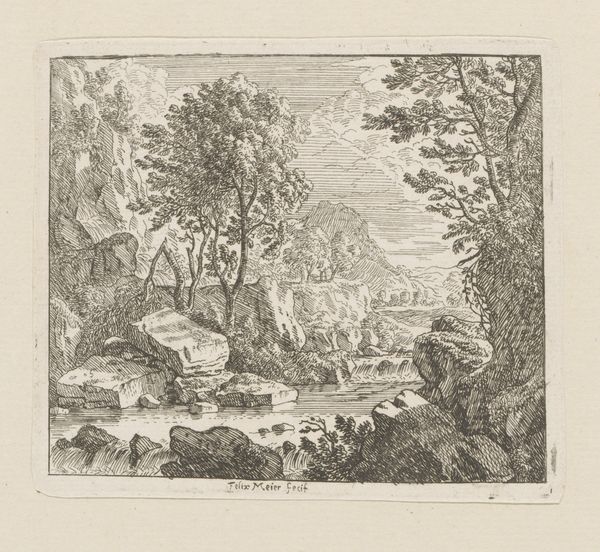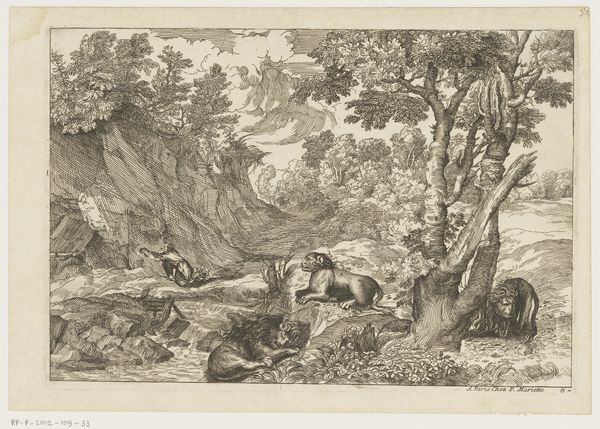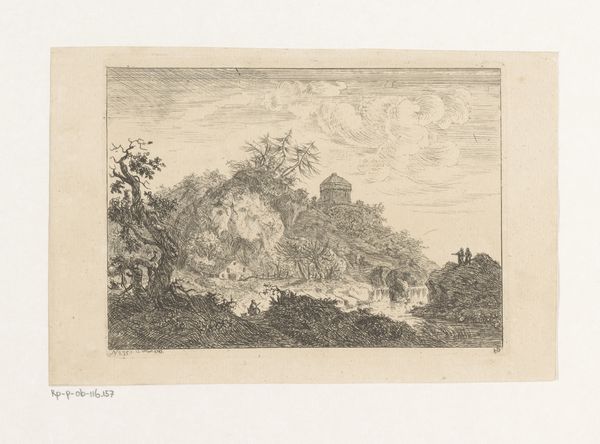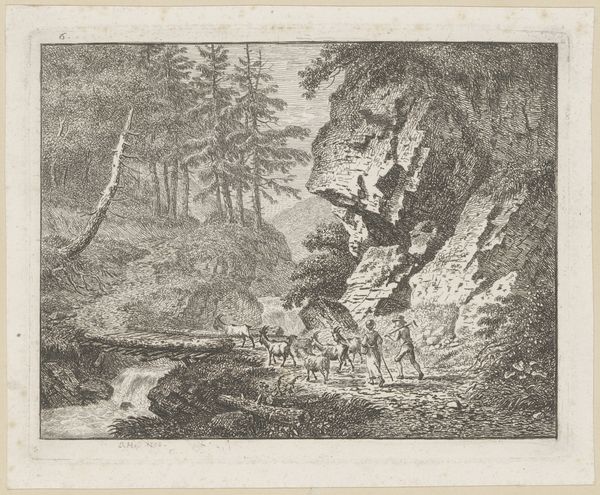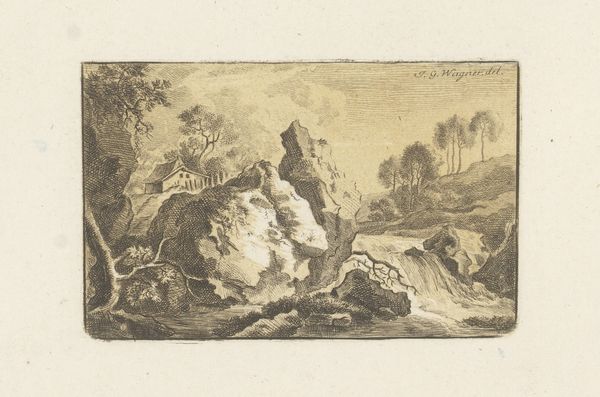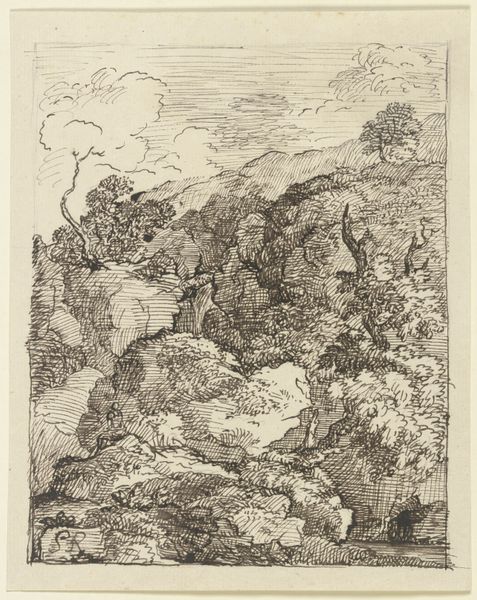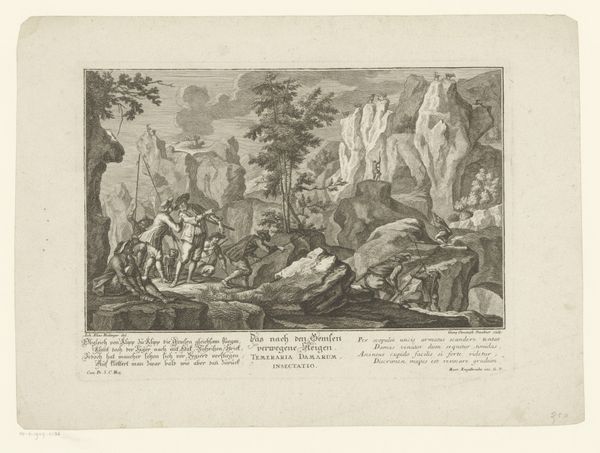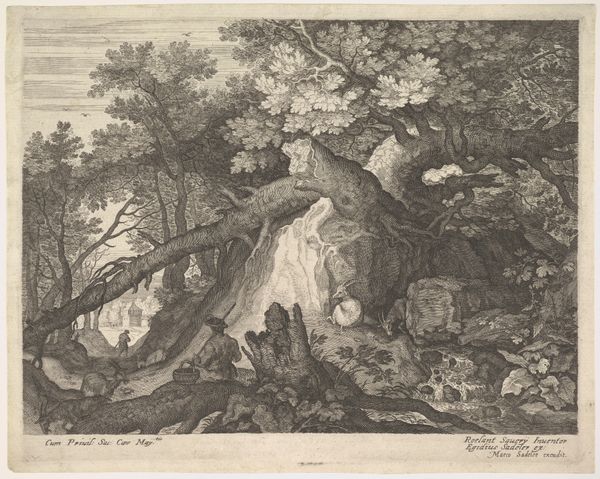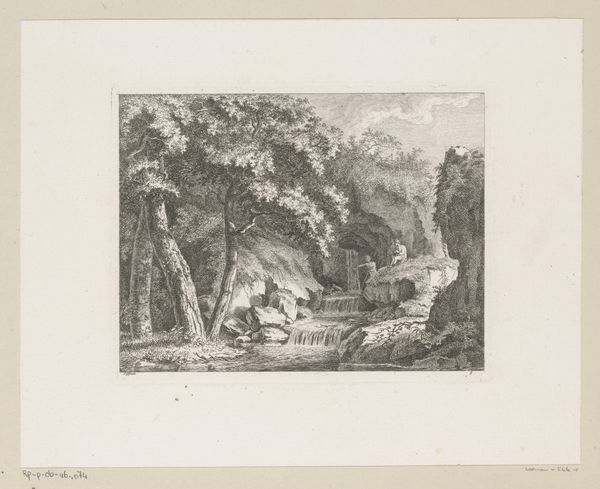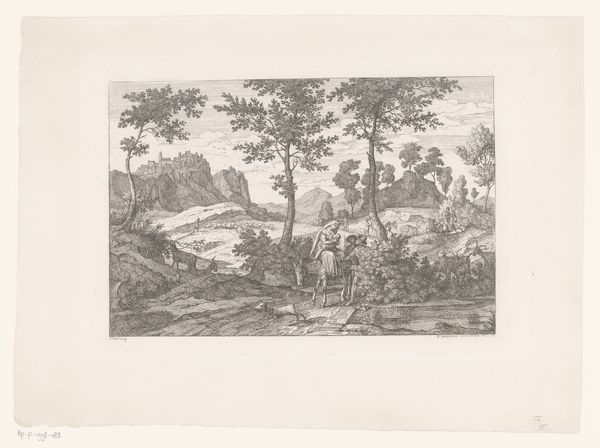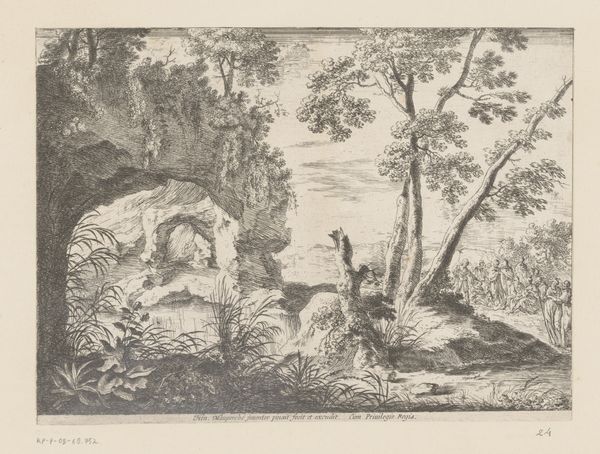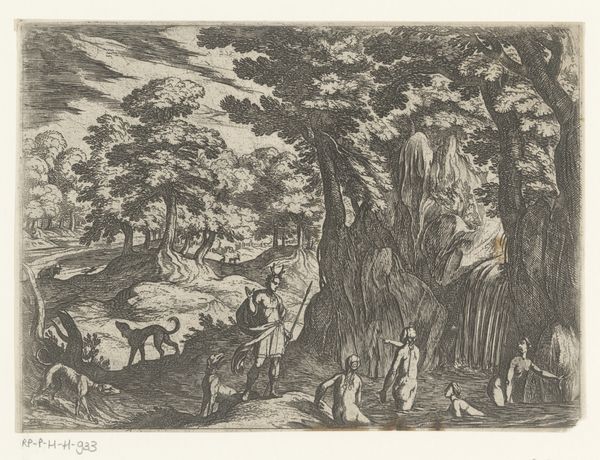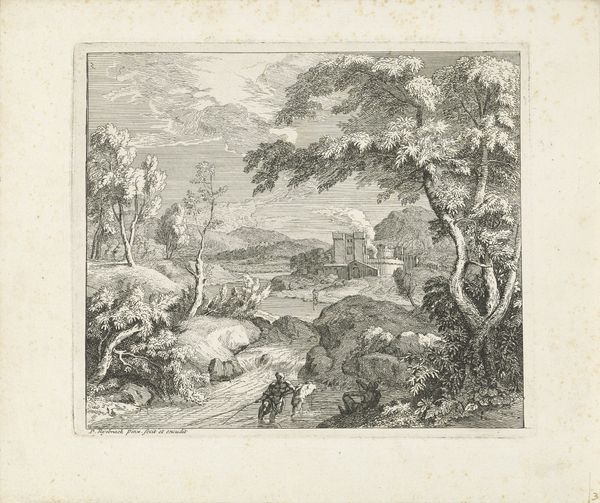
drawing, ink
#
drawing
#
light pencil work
#
baroque
#
pen sketch
#
pencil sketch
#
sketch book
#
landscape
#
personal sketchbook
#
ink
#
sketchwork
#
pen-ink sketch
#
pen work
#
sketchbook drawing
#
sketchbook art
Dimensions: height 106 mm, width 122 mm
Copyright: Rijks Museum: Open Domain
Curator: The energy here is palpable, even in monochrome. Editor: It does feel teeming with potential. This drawing, dating from sometime between 1663 and 1713, is entitled *Cascade met gebroken rots*, or "Cascade with Broken Rock." Curator: Broken rock…Yes. It makes me think about fragmentation, and resilience. The persistence of nature despite… well, everything. Water keeps flowing. Is there something in the artistic trend that broke with classical representation toward the aesthetic of nature, perhaps? Editor: It speaks to the burgeoning scientific interest in natural phenomena at the time. Felix Meyer, the artist, seems to be grappling with the sublime, but on an intimate scale, fitting with the Baroque interest in nature's grand theatricality, viewed through a humanistic lens. What resonates with you particularly? Curator: The light, flickering across the water's surface. Water often symbolizes purification, change… renewal. The way it interacts with the rocks, those seemingly immutable forms…there's a dialogue there. Perhaps nature always teaches transformation? Editor: I see it, and agree: this drawing underscores how art became increasingly involved with conveying knowledge, specifically of natural forms. It wasn’t enough to depict landscapes beautifully; there was a drive to dissect and comprehend them, seen by Meyer’s skillful hatching. And how this serves an interest to understand nature with great detail. Curator: I also think about the symbolism embedded in nature. The trees—growth, connection to the earth, family. The water, as you say, a mirror to society's reflection of nature's forces at the time. Do you consider its socio-political context in a reading like this? Editor: Absolutely! Art and natural science weren't isolated pursuits. Patrons supported scientific expeditions and commissioned landscape paintings. The drawing might reflect societal anxieties, for instance about taming nature, the same anxieties that propelled people’s understanding through study and taxonomy. This tiny image speaks volumes about humanity’s evolving relationship with the natural world. Curator: It has definitely given me food for thought regarding our constant search for symbols. And its continuous, unconscious interpretation and re-interpretation within ourselves.
Comments
No comments
Be the first to comment and join the conversation on the ultimate creative platform.
